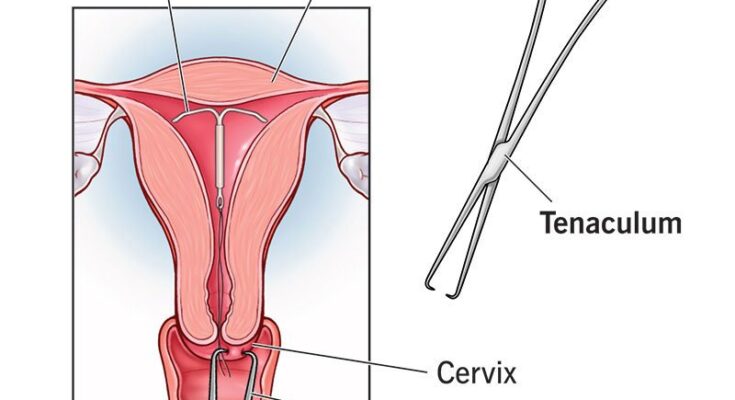Tenaculum forceps securely grasp tissue during delicate procedures, providing stability and precision. Their role in gynecological and surgical settings is indispensable, often being the unsung heroes of successful operations. With their sharp pointed tips and firm grip, tenaculum forceps ensure meticulous control, enabling practitioners to execute intricate maneuvers with confidence. From simple biopsies to complex surgeries, these instruments play a crucial role in achieving optimal outcomes. Join us as we delve deeper into the world of tenaculum forceps and uncover the crucial role they play in modern medical practice.
The Mighty Tenaculum Forceps: A Guide to its Purpose, Types, and Uses
Welcome to our comprehensive guide on the tenaculum forceps! If you’re curious about this fascinating medical tool, you’ve come to the right place. In this article, we’ll delve into the world of tenaculum forceps, exploring their history, functions, and the various types used in modern medicine. So, sit back, relax, and let’s unravel the mysteries of the tenaculum forceps together!
The Origin Story of the Tenaculum Forceps
Before we dive into the nitty-gritty details of tenaculum forceps, let’s take a trip back in time to uncover their origin story. The tenaculum forceps have been a vital instrument in medical procedures for centuries. The word “tenaculum” is derived from the Latin word “tenere,” which means “to hold.” These forceps are designed to grasp and hold tissues during various surgical procedures, making them a crucial tool in the medical field.
Historically, tenaculum forceps were crafted from metal, featuring a long, slender body with sharp, pointed ends. While the design has evolved over time, the core purpose of these forceps remains the same – to provide surgeons with a firm grip on tissues, ensuring precision and accuracy during procedures.
The Purpose of Tenaculum Forceps
So, why are tenaculum forceps so essential in the world of medicine? These versatile instruments serve multiple purposes, making them indispensable tools in various surgical specialties. One of the primary functions of tenaculum forceps is to securely hold tissues in place, allowing surgeons to perform delicate procedures with ease.
When performing procedures that require precision and control, such as suturing or tissue manipulation, tenaculum forceps play a crucial role in maintaining a steady grip on the target area. Additionally, these forceps are often used in gynecological procedures, such as colposcopies and cervical biopsies, where precise tissue manipulation is necessary.
Types of Tenaculum Forceps
As medical technology continues to advance, different types of tenaculum forceps have been developed to cater to specific needs and surgical requirements. Here are some common types of tenaculum forceps used in modern medicine:
1. Sharp Hook Tenaculum Forceps
Sharp hook tenaculum forceps feature a pointed, hook-like end that allows for precise grasping of tissues. These forceps are commonly used in procedures that require accurate tissue manipulation, such as skin grafting and plastic surgery.
2. Blunt Hook Tenaculum Forceps
Blunt hook tenaculum forceps have a rounded, blunt end that provides a gentler grip on tissues. These forceps are often used in delicate procedures where the risk of tissue damage is a concern, such as in ophthalmic surgery.
3. Uterine Tenaculum Forceps
Uterine tenaculum forceps are specifically designed for gynecological procedures, such as intrauterine device (IUD) insertions and endometrial biopsies. These forceps have a longer handle and a curved tip, allowing for precise manipulation of the uterine wall.
Uses of Tenaculum Forceps in Modern Medicine
Modern medicine relies heavily on the use of tenaculum forceps in a wide range of procedures across various specialties. From minor dermatological surgeries to complex gynecological interventions, these forceps are a staple in the surgical toolkit of healthcare professionals.
One common application of tenaculum forceps is in colposcopies, where they are used to stabilize the cervix and obtain tissue samples for further examination. By securely holding the tissue in place, tenaculum forceps help ensure that the procedure is carried out smoothly and accurately.
In the field of plastic surgery, tenaculum forceps are used to manipulate skin grafts and tissues during reconstructive procedures. The precision and control provided by these forceps are essential in achieving optimal outcomes for patients undergoing cosmetic surgeries.
And there you have it – a comprehensive guide to the mighty tenaculum forceps! From their ancient origins to modern-day applications, these versatile instruments continue to play a vital role in the world of medicine. Whether you’re a budding medical student or simply curious about surgical tools, the tenaculum forceps are undoubtedly fascinating devices worthy of exploration.
We hope this guide has shed light on the importance of tenaculum forceps and how they contribute to the success of various medical procedures. So, the next time you encounter these trusty forceps in a surgical setting, you’ll have a newfound appreciation for their critical role in ensuring precision and accuracy in healthcare.
IUD Procedure with Tenaculum
Frequently Asked Questions
What are tenaculum forceps used for?
Tenaculum forceps are surgical instruments used to grasp and hold delicate tissues during procedures, such as during cervical biopsies or uterine procedures. They provide a firm grip to hold the tissue steady for better visualization and manipulation.
How do tenaculum forceps differ from other types of forceps?
Tenaculum forceps have sharp, pointed tips that are designed to pierce and firmly grasp tissues, whereas other forceps may have different shapes or mechanisms suited for various purposes, such as clamping or cutting tissues.
Are tenaculum forceps reusable or disposable?
Tenaculum forceps can be either reusable or disposable, depending on the material and design. Reusable tenaculum forceps are typically made of stainless steel and can be sterilized for multiple uses, while disposable ones are made of plastic or other single-use materials.
Final Thoughts
In conclusion, tenaculum forceps play a crucial role in various medical procedures by providing a secure grip on tissues. Their design allows for precise manipulation during surgeries, reducing the risk of tissue damage. Surgeons rely on tenaculum forceps to ensure accuracy and control in delicate procedures. The use of tenaculum forceps is essential in gynecological surgeries, ensuring successful outcomes. Ultimately, these specialized forceps enhance surgical precision and contribute to improved patient care.




